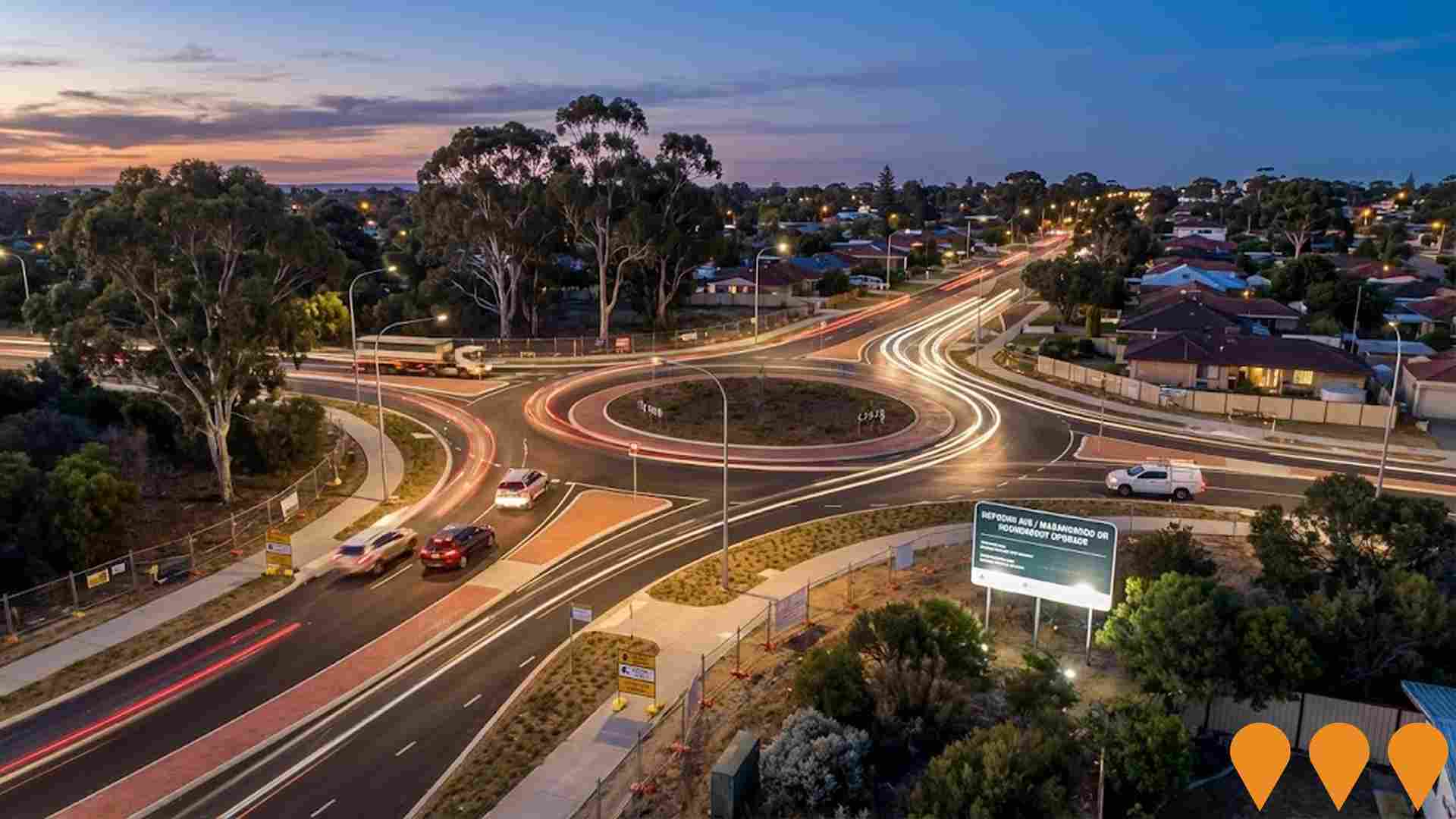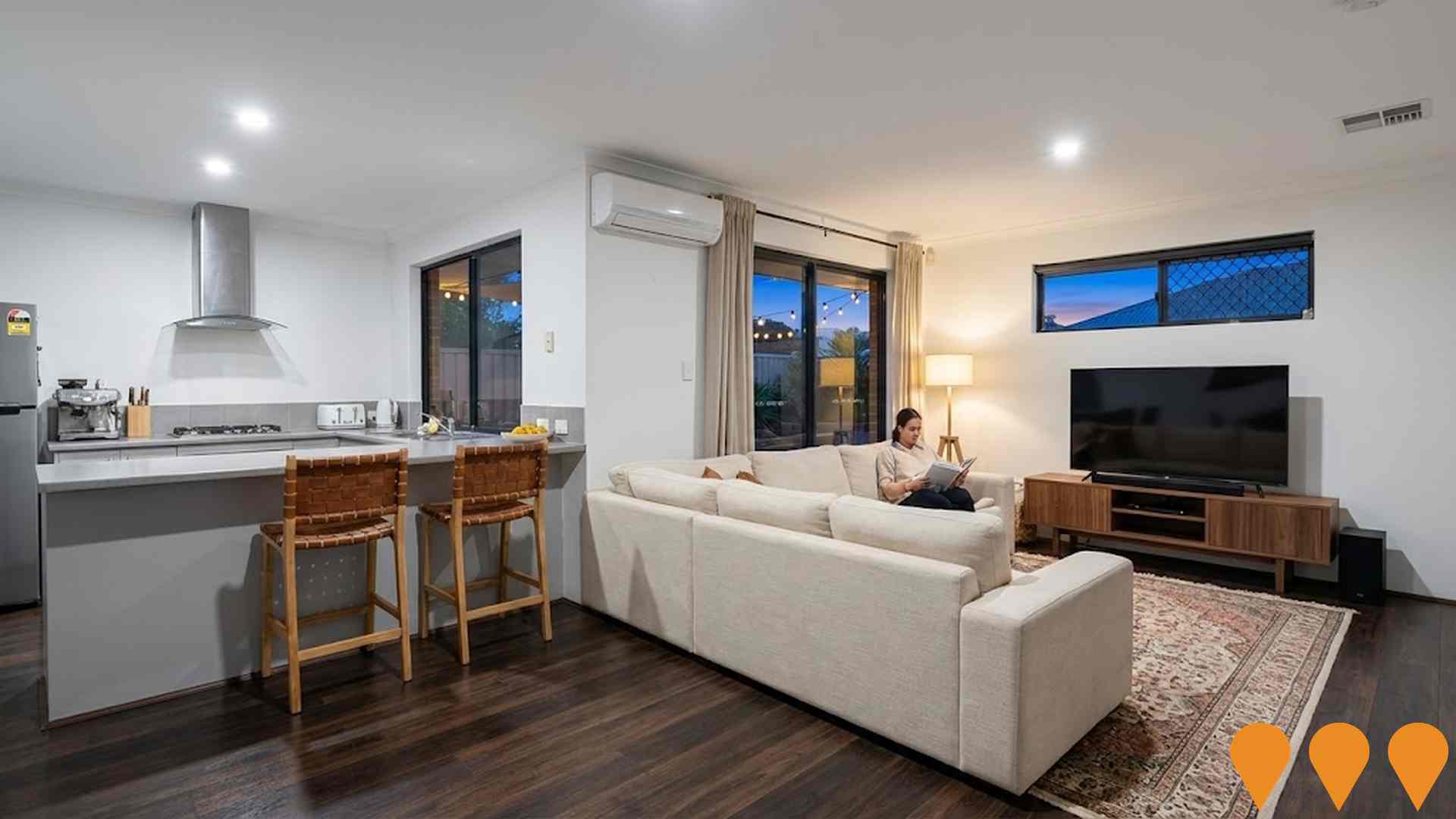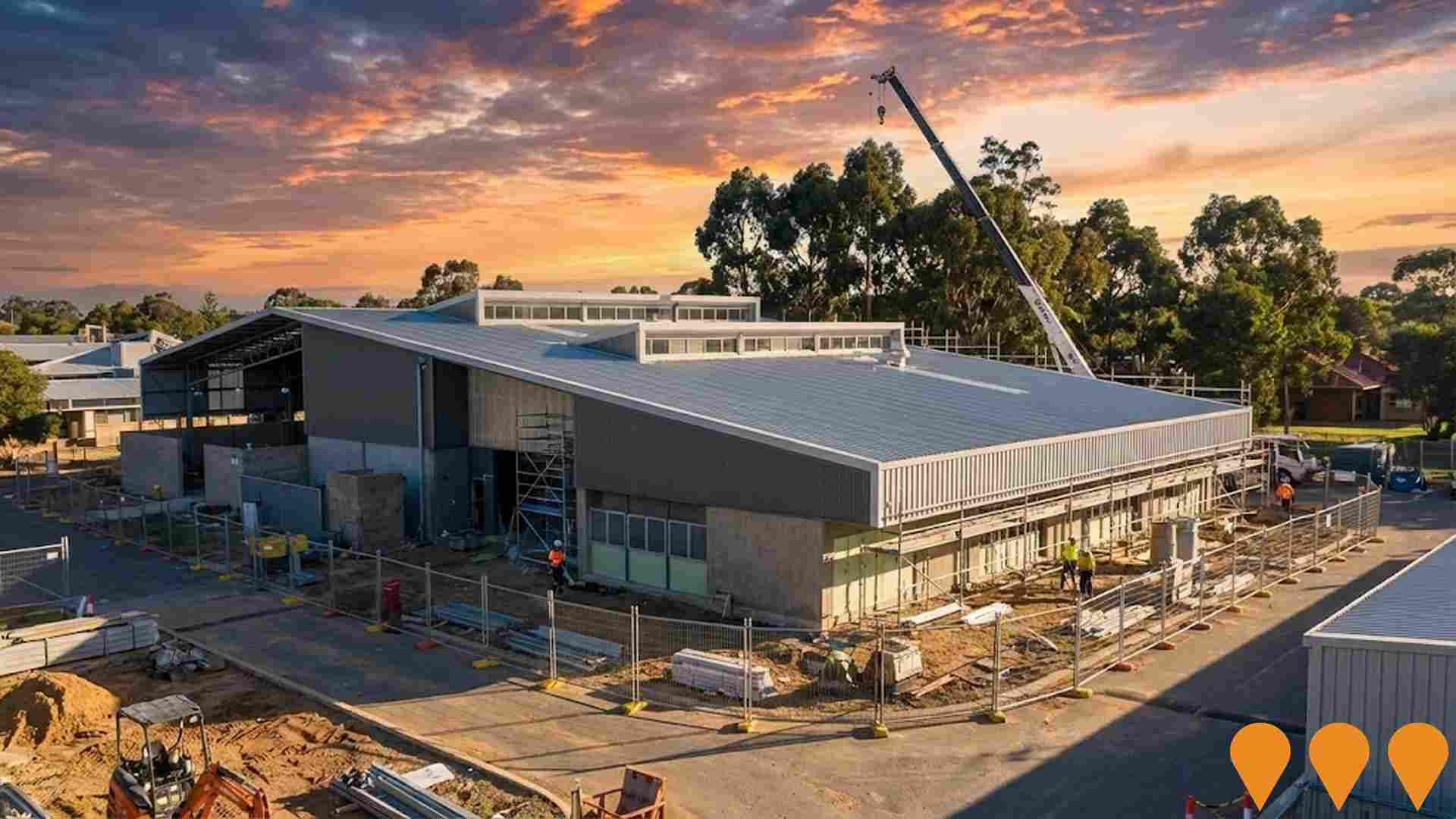Chart Color Schemes
est. as @ -- *
ABS ERP | -- people | --
2021 Census | -- people
Sales Activity
Curious about local property values? Filter the chart to assess the volume and appreciation (including resales) trends and regional comparisons, or scroll to the map below view this information at an individual property level.
Find a Recent Sale
Sales Detail
Population
Population growth drivers in Balga - Mirrabooka are strong compared to national averages based on AreaSearch's ranking of recent, and medium to long-term trends
Balga - Mirrabooka's population, as of November 2025, is approximately 23,324. This figure represents a growth of 2,292 people since the 2021 Census, which reported a population of 21,032. The increase is inferred from ABS estimates; the resident population was 23,317 in June 2024 and there were an additional 62 validated new addresses since the Census date. This results in a density ratio of 2,468 persons per square kilometer, placing Balga - Mirrabooka in the upper quartile nationally according to AreaSearch's assessments. The area's growth rate of 10.9% since the 2021 census exceeds both the national average (8.9%) and the SA3 area average, indicating it as a growth leader. Overseas migration contributed approximately 71.4% of overall population gains during recent periods.
AreaSearch uses ABS/Geoscience Australia projections for each SA2 area, released in 2024 with a base year of 2022. For areas not covered by this data and to estimate growth post-2032, AreaSearch utilises ABS Greater Capital Region projections from 2023 based on 2022 data. Future population trends suggest an increase just below the national median by 2041, with a projected expansion of 2,660 persons and a total gain of 11.4% over the 17-year period.
Frequently Asked Questions - Population
Development
AreaSearch assessment of residential development activity positions Balga - Mirrabooka among the top 25% of areas assessed nationwide
Balga - Mirrabooka averaged approximately 93 new dwelling approvals annually between FY-21 and FY-25, with a total of 468 homes approved during this period. In the current financial year FY-26, 50 dwellings have been approved so far. On average, over these five years, each constructed dwelling has accommodated about 4.3 new residents annually.
This has led to a situation where demand significantly exceeds new supply, typically resulting in price growth and increased buyer competition. The average construction cost of new properties is around $190,000, which is below the regional average, suggesting more affordable housing options for buyers. In terms of commercial development, $3.1 million worth of approvals have been registered this financial year.
When compared to Greater Perth, Balga - Mirrabooka has similar levels of development per person, maintaining market balance consistent with the broader area. The new building activity in Balga - Mirrabooka shows a concentration of detached dwellings at 71.0% and attached dwellings at 29.0%, sustaining the area's suburban identity with a focus on family homes suited to buyers seeking space. Currently, there are approximately 234 people per dwelling approval in the area, reflecting a transitioning market. Population forecasts indicate that Balga - Mirrabooka is expected to gain around 2,653 residents by 2041. Present construction rates appear balanced with future demand, fostering steady market conditions without excessive price pressure.
Frequently Asked Questions - Development
Infrastructure
Balga - Mirrabooka has limited levels of nearby infrastructure activity, ranking in the 15thth percentile nationally
Infrastructure changes significantly influence an area's performance. AreaSearch has identified 18 projects likely impacting the area. Notable ones include Perth Active Transport Network, Mirrabooka Town Square Upgrade, TAFE Balga Campus Skills Hub, and Perth Film Studios. The following list details those most relevant.
Professional plan users can use the search below to filter and access additional projects.
INFRASTRUCTURE SEARCH
 Denotes AI-based impression for illustrative purposes only, not to be taken as definitive under any circumstances. Please follow links and conduct other investigations from the project's source for actual imagery. Developers and project owners wishing us to use original imagery please Contact Us and we will do so.
Denotes AI-based impression for illustrative purposes only, not to be taken as definitive under any circumstances. Please follow links and conduct other investigations from the project's source for actual imagery. Developers and project owners wishing us to use original imagery please Contact Us and we will do so.
Frequently Asked Questions - Infrastructure
Perth Film Studios
A state-of-the-art screen production facility for major film and TV projects, including four sound stages (90,000 sq ft total), two large workshops, a 5-acre backlot, and production offices, aiming to support economic diversification through the screen industry. Construction is approximately 60% complete, targeting a mid-2026 first production, and is targeting a 4-Star Green Star rating.
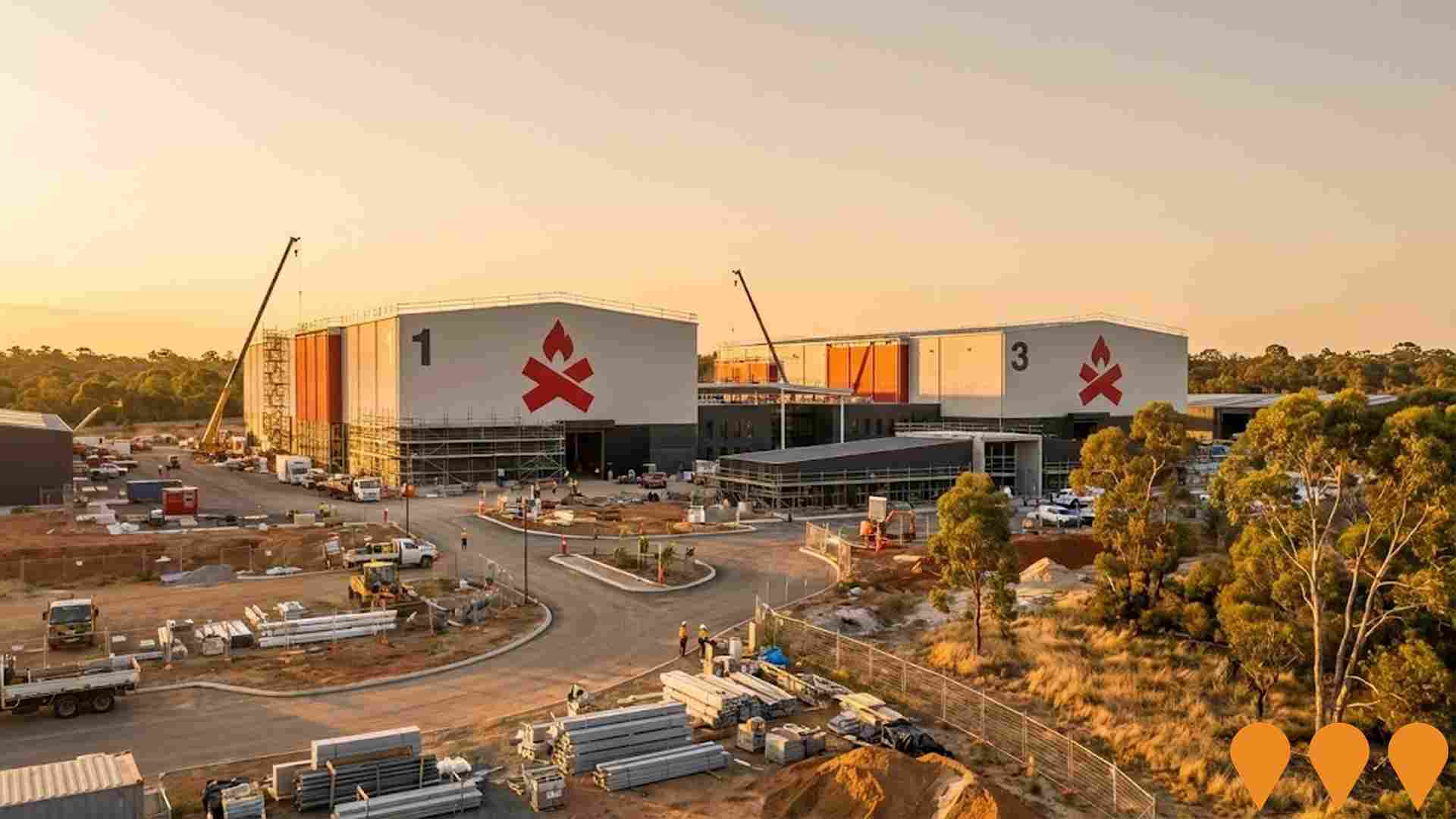
Mirrabooka Town Centre Redevelopment
Revitalisation of the Mirrabooka Activity Centre into a vibrant mixed-use precinct. Key components include the $1M upgrade of Mirrabooka Town Square (completion due late 2025), the relocation of the Perth Glory administration and training headquarters to the precinct, and the development of future high-density residential and commercial buildings on Milldale Way.
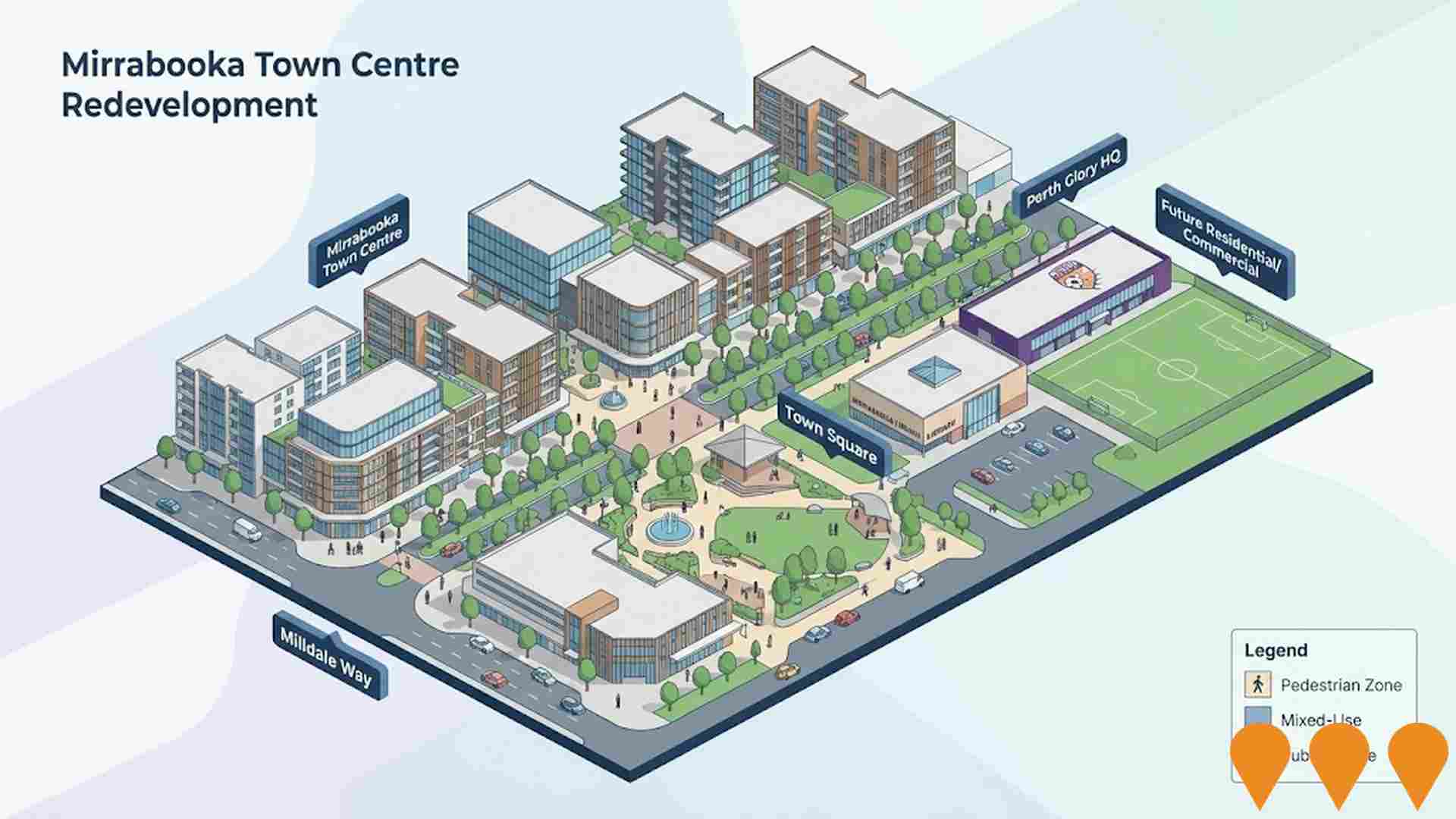
Mirrabooka Town Square Upgrade
Completed $1 million upgrade of Mirrabooka Town Square between Mirrabooka Bus Station and The Square Mirrabooka, delivered by the City of Stirling with Kardan Construction and design partner Hatch. Works replaced hard paving with native planting and shade trees, added new bench seating and a timber alfresco deck linked to the Dome cafe, informal childrens play elements, CPTED based lighting and sightlines, and integrated public art including painted bollards, carved timber pieces and printed shade sails. Construction ran from April to August 2025, with a community celebration and official opening in November 2025.
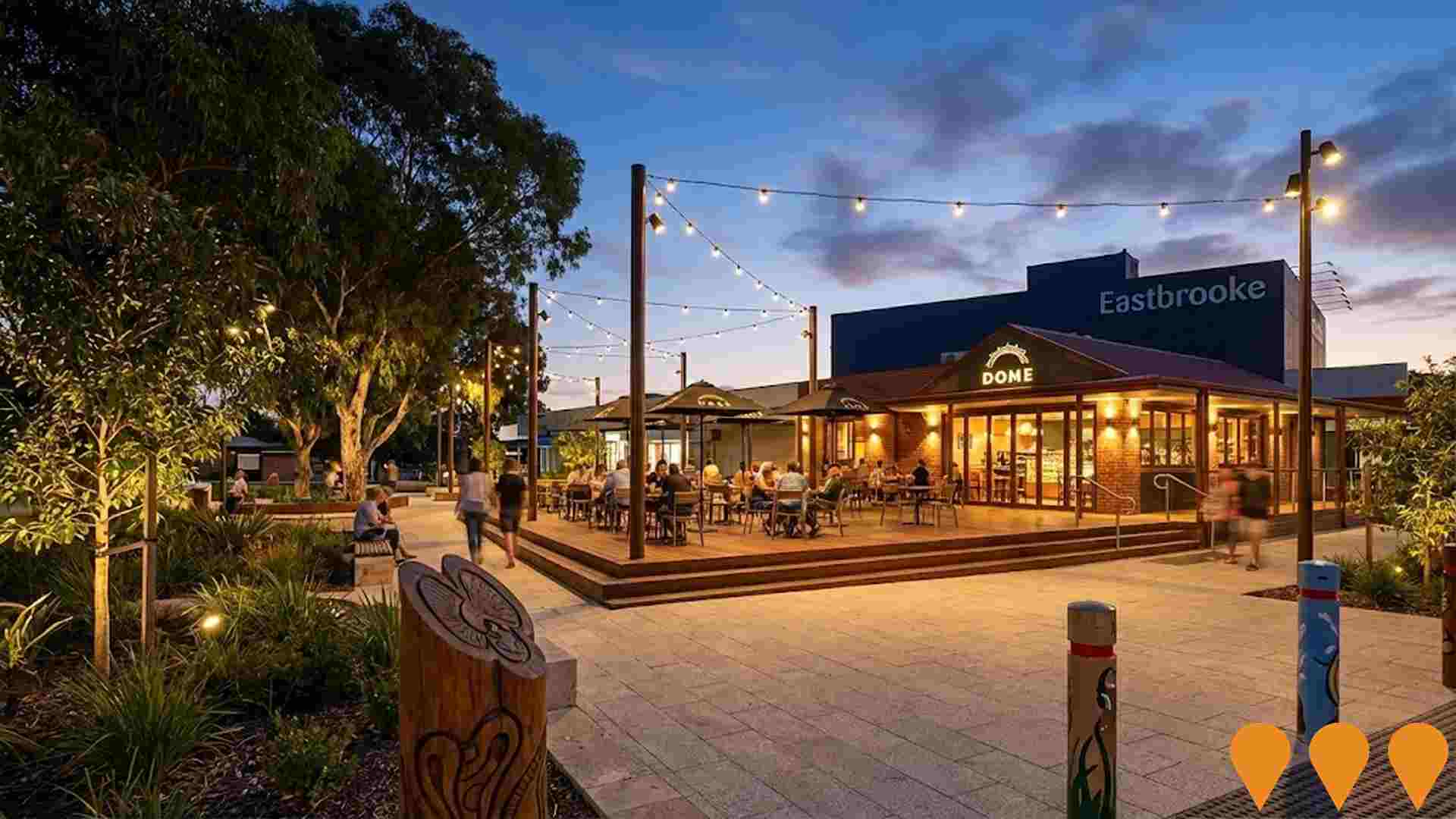
The Amble Estate (Former Hainsworth Primary School Site Redevelopment)
Redevelopment of the 4.2-hectare former Hainsworth Primary School site into an affordable and sustainable residential community known as 'The Amble Estate'. The development, guided by Bioregional's One Planet Living framework, includes 130 dwellings comprising small lot houses, apartments, and townhouses, with a focus on sustainability and a mix of private, social, and shared equity housing. The final stage was completed in May 2019, and the project is 100% sold out.
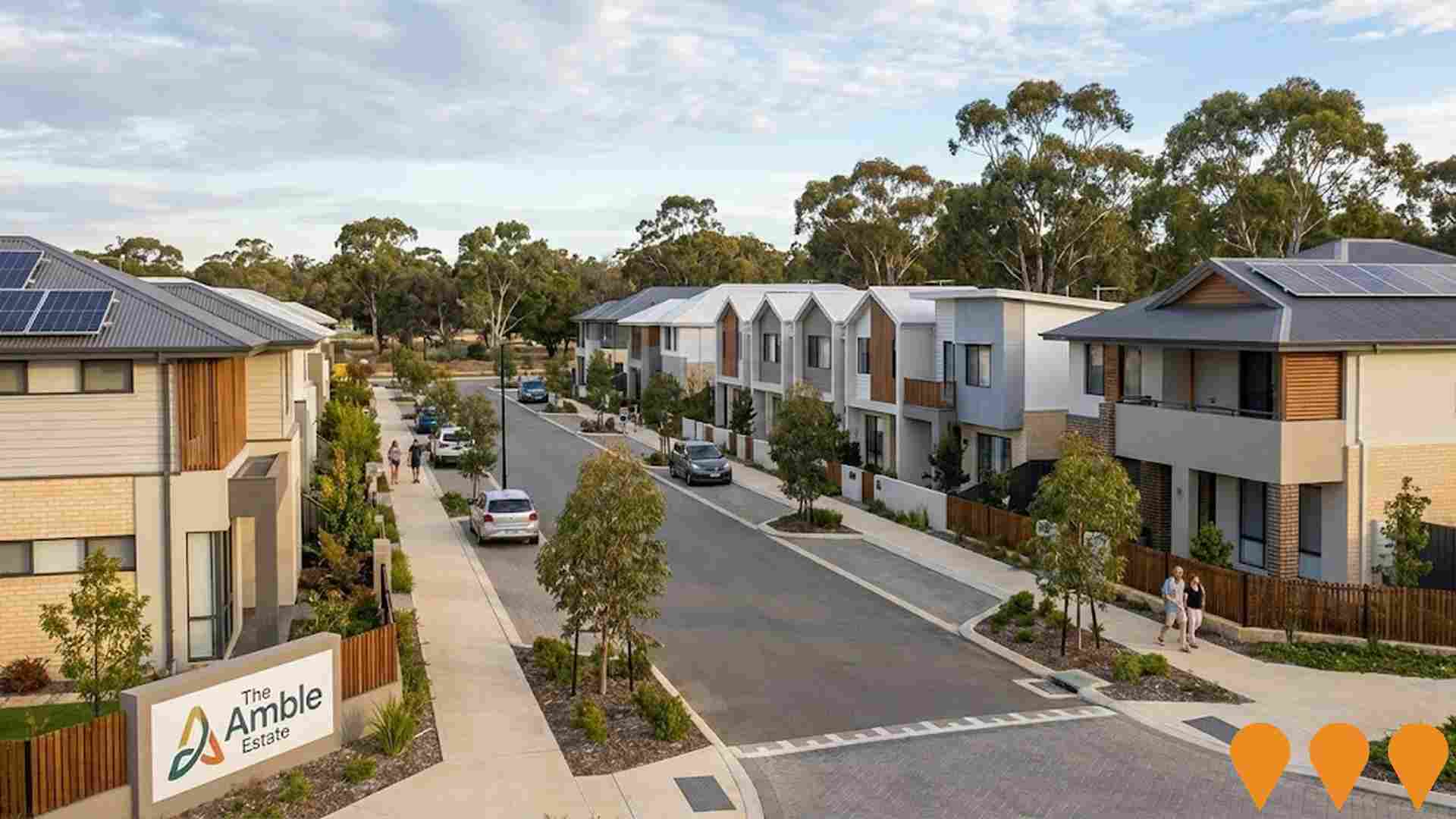
Stirling Better Suburbs Urban Renewal Strategy
Urban renewal and planning program led by the City of Stirling to coordinate infill housing, higher activity around centres and corridors, improved transport use, and better public realm across Balga, Dianella, Mirrabooka, Nollamara and Westminster. Workstreams are delivered through the Local Planning Strategy and related tools including the Better Suburbs Neighbourhood Centres Local Development Plan.

Perth Active Transport Network
Program of cycling and walking upgrades across the Perth metropolitan area, delivering new and improved shared paths, safer street treatments and active transport connections between key activity centres and public transport hubs, including links through Nollamara and surrounding northern suburbs. Works form part of the broader WA Bicycle Network and long term cycle network program and are being progressively rolled out toward an expected completion around 2026.
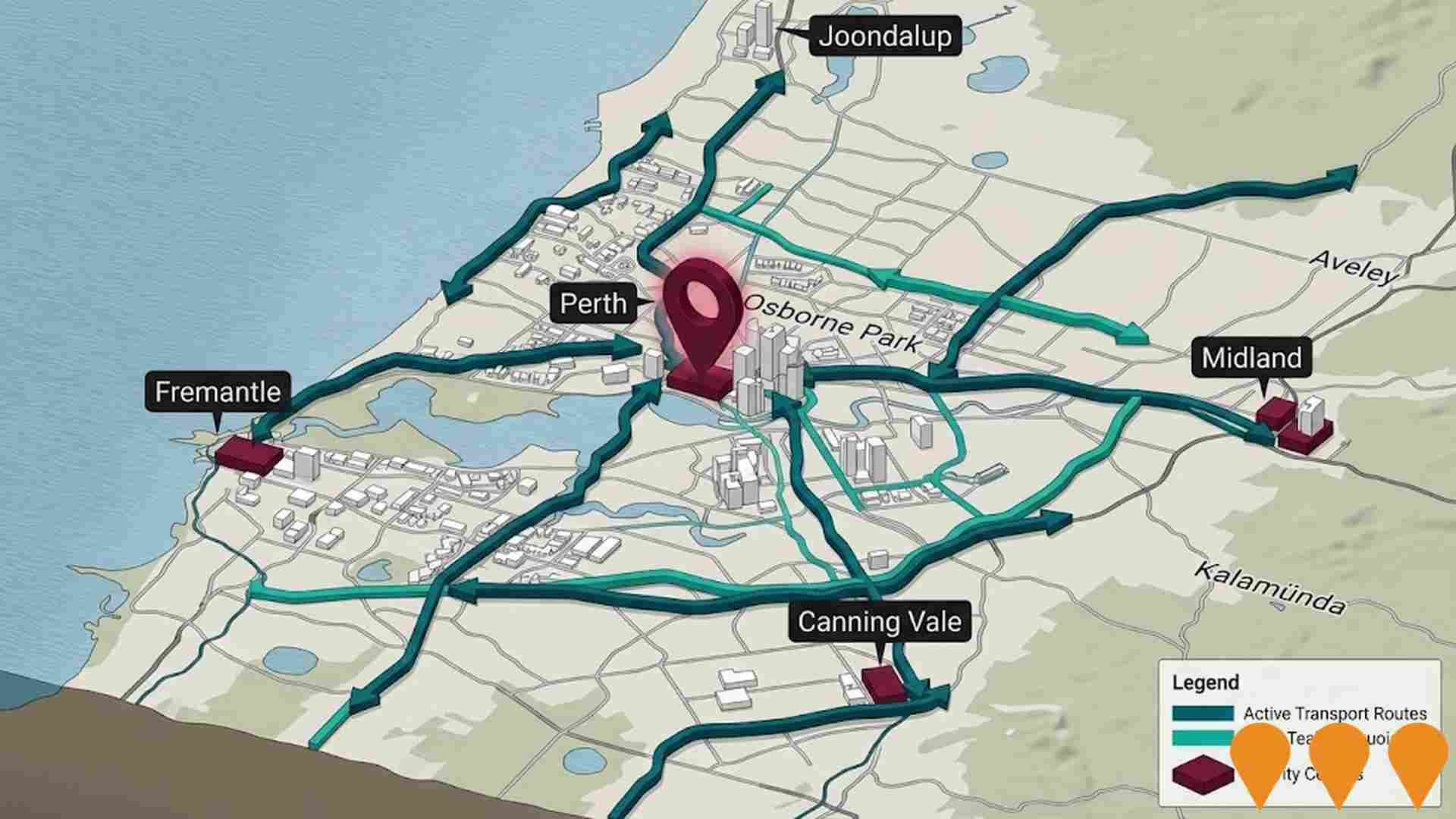
Girrawheen Hub Precinct Redevelopment
City of Wanneroo-led redevelopment of the Girrawheen Hub, Library, Community Centre and community garden into a modern single-storey multi-purpose precinct. Council approved a revised concept design in Feb 2025; detailed design is progressing with construction targeted to commence in 2026 and completion earmarked for June 2027. Estimated project cost is about $30 million.

TAFE Balga Campus Skills Hub
Development of a new skills training hub at TAFE Balga Campus to provide modern vocational education facilities and expand training capacity for the northern suburbs.

Employment
AreaSearch assessment indicates Balga - Mirrabooka faces employment challenges relative to the majority of Australian markets
Balga - Mirrabooka has a skilled workforce with diverse sector representation. The unemployment rate was 11.3% in June 2024.
Employment growth over the past year was estimated at 5.8%. As of June 2025, 10,893 residents are employed, with an unemployment rate of 7.5%, which is higher than Greater Perth's rate of 3.9%. Workforce participation in Balga - Mirrabooka lags behind Greater Perth at 58.7% compared to 65.2%. Leading employment industries include health care & social assistance, retail trade, and accommodation & food.
The area has a notable concentration in transport, postal & warehousing, with employment levels at 1.7 times the regional average. Conversely, professional & technical services show lower representation at 4.5% compared to the regional average of 8.2%. Over the 12 months to June 2025, employment increased by 5.8%, while labour force increased by 4.0%, reducing the unemployment rate by 1.5 percentage points. National employment forecasts from Jobs and Skills Australia, released in May 2025, project national growth of 6.6% over five years and 13.7% over ten years. Applying these projections to Balga - Mirrabooka's employment mix suggests local growth of approximately 6.2% over five years and 13.2% over ten years.
Frequently Asked Questions - Employment
Income
The area's income levels rank in the lower 15% nationally based on AreaSearch comparative data
Balga-Mirrabooka's median income among taxpayers in financial year 2022 was $43,976. The average income stood at $49,392 during the same period. These figures compare to Greater Perth's median and average incomes of $58,380 and $78,020 respectively. Based on Wage Price Index growth of 14.2% since financial year 2022, current estimates for Balga-Mirrabooka would be approximately $50,221 (median) and $56,406 (average) as of September 2025. Census data reveals that household, family and personal incomes in Balga-Mirrabooka all fall between the 16th and 20th percentiles nationally. Distribution data shows that 31.3% of the population (7,300 individuals) fall within the $1,500 - $2,999 income range, mirroring the surrounding region where 32.0% occupy this bracket. Housing affordability pressures are severe in Balga-Mirrabooka, with only 80.0% of income remaining, ranking at the 17th percentile.
Frequently Asked Questions - Income
Housing
Balga - Mirrabooka is characterized by a predominantly suburban housing profile, with a higher proportion of rental properties than the broader region
In Balga - Mirrabooka, as per the latest Census, 73.7% of dwellings were houses, with the remaining 26.3% being semi-detached, apartments, or other types. This compares to Perth metro's 59.6% houses and 40.4% other dwellings. Home ownership in Balga - Mirrabooka stood at 19.6%, with mortgaged dwellings at 36.2% and rented ones at 44.2%. The median monthly mortgage repayment was $1,482, lower than Perth metro's average of $1,950. Median weekly rent in Balga - Mirrabooka was $305, below Perth metro's $350 and the national average of $375. Nationally, Balga - Mirrabooka's mortgage repayments were significantly lower than the Australian average of $1,863.
Frequently Asked Questions - Housing
Household Composition
Balga - Mirrabooka features high concentrations of group households, with a higher-than-average median household size
Family households account for 65.8% of all households, including 28.9% couples with children, 18.8% couples without children, and 16.0% single parent families. Non-family households constitute the remaining 34.2%, with lone person households at 29.0% and group households comprising 5.2%. The median household size is 2.6 people, larger than the Greater Perth average of 2.4.
Frequently Asked Questions - Households
Local Schools & Education
Educational outcomes in Balga - Mirrabooka fall within the lower quartile nationally, indicating opportunities for improvement in qualification attainment
The area has lower university qualification rates than the SA3 average, with 20.1% compared to 37.1%. Bachelor degrees are most common at 14.4%, followed by postgraduate qualifications (4.4%) and graduate diplomas (1.3%). Vocational credentials are prevalent, with 34.4% of residents aged 15+ holding them, including advanced diplomas (10.7%) and certificates (23.7%). Educational participation is high at 35.0%, with 11.3% in primary, 8.3% in secondary, and 5.8% in tertiary education.
There are 10 schools operating within Balga - Mirrabooka, educating approximately 3,765 students. The school mix includes 7 primary, 1 secondary, and 2 K-12 schools.
Frequently Asked Questions - Education
Schools Detail
Nearby Services & Amenities
Transport
Transport servicing is good compared to other areas nationally based on assessment of service frequency, route connectivity and accessibility
The analysis of public transport in the area covering Balga - Mirrabooka shows that there are currently 134 active transport stops operating. These stops cater to a mix of bus services. The area is served by 17 individual routes which collectively facilitate 3,489 weekly passenger trips.
The accessibility of transport within this region is rated as excellent with residents typically residing just 178 meters away from the nearest transport stop. On average, service frequency across all routes amounts to 498 trips per day, translating to approximately 26 weekly trips per individual stop.
Frequently Asked Questions - Transport
Transport Stops Detail
Health
The level of general health in Balga - Mirrabooka is notably higher than the national average with prevalence of common health conditions low among the general population though higher than the nation's average across older, at risk cohorts
Balga - Mirrabooka shows better-than-average health outcomes with a low prevalence of common health conditions among its general population. However, this prevalence is higher than the national average among older and at-risk cohorts. The area has an extremely low rate of private health cover, approximately 46% of the total population (~10,752 people), compared to Greater Perth's 59.9%.
Nationally, the average is 55.3%. The most common medical conditions in the area are mental health issues and asthma, affecting 7.0% and 6.4% of residents respectively. Meanwhile, 74.8% of residents declare themselves completely clear of medical ailments, compared to Greater Perth's 73.0%. The area has a lower proportion of seniors aged 65 and over, at 13.6% (3,174 people), than Greater Perth's 18.3%. Health outcomes among seniors present some challenges that require more attention than the broader population.
Frequently Asked Questions - Health
Cultural Diversity
Balga - Mirrabooka is among the most culturally diverse areas in the country based on AreaSearch assessment of a range of language and cultural background related metrics
Balga-Mirrabooka is among the most culturally diverse areas in Australia, with 54.3% of its population speaking a language other than English at home (Australian Bureau of Statistics, Census of Population and Housing, 2016). Furthermore, 52.4% of Balga-Mirrabooka's residents were born overseas (ibid.). Christianity is the predominant religion in Balga-Mirrabooka, comprising 43.2% of its population (ibid.).
However, Islam is notably overrepresented in Balga-Mirrabooka, making up 16.2% of the population compared to the Greater Perth average of 4.2% (ibid.). In terms of ancestry, the top three represented groups in Balga-Mirrabooka are 'Other', comprising 32.5% of its population, which is substantially higher than the regional average of 13.8%; English, comprising 16.2%, notably lower than the regional average of 23.5%; and Australian, comprising 14.3% (ibid.). There are also notable divergences in the representation of certain other ethnic groups: Vietnamese is overrepresented at 4.9% compared to the regional average of 1.7%, Macedonian at 1.9% versus 1.5%, and Serbian at 0.7% versus 0.5%.
Frequently Asked Questions - Diversity
Age
Balga - Mirrabooka's young demographic places it in the bottom 15% of areas nationwide
Balga - Mirrabooka has a median age of 33, which is younger than Greater Perth's figure of 37 and Australia's national average of 38 years. Compared to Greater Perth, Balga - Mirrabooka has a higher proportion of residents aged 25-34 (17.6%) but fewer residents aged 45-54 (10.9%). Between the 2021 Census and the present day, the population aged 75 to 84 has grown from 3.6% to 4.5%. Conversely, the proportion of residents aged 25 to 34 has decreased from 18.6% to 17.6%. By 2041, Balga - Mirrabooka's population is forecasted to undergo significant demographic changes. The 75 to 84 age group is projected to grow by 74%, adding 781 residents to reach a total of 1,833. This growth is part of an overall trend towards demographic aging, with residents aged 65 and older representing 59% of the anticipated population growth. Meanwhile, the populations aged 0 to 4 and 35 to 44 are expected to decline.

